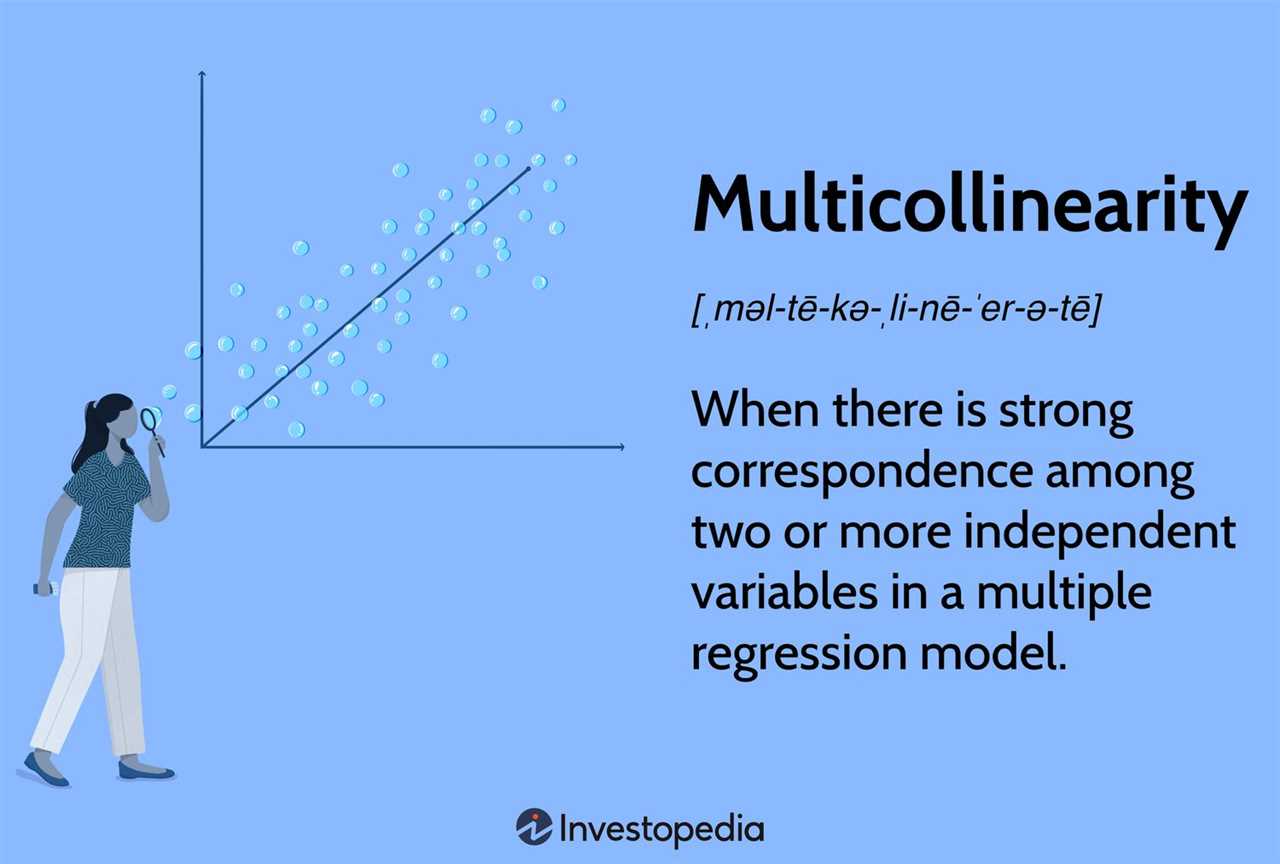What is Multicollinearity?
Multicollinearity refers to a phenomenon in statistics where two or more independent variables in a regression model are highly correlated with each other. In other words, multicollinearity occurs when there is a linear relationship between two or more independent variables.
When multicollinearity is present in a regression model, it can cause several issues. One of the main issues is that it becomes difficult to determine the individual effects of each independent variable on the dependent variable. This is because the presence of multicollinearity makes it challenging to isolate the unique contribution of each independent variable.
Multicollinearity can also lead to unstable and unreliable coefficient estimates. This means that the coefficients assigned to the independent variables may vary widely depending on the specific sample used for analysis. Consequently, the results of the regression model may not be generalizable to the population as a whole.
There are several common causes of multicollinearity. One cause is the inclusion of redundant or highly similar independent variables in the regression model. For example, if both height and weight are included as independent variables in a regression model, it is likely that they will be highly correlated with each other.
Another cause of multicollinearity is the presence of interaction terms in the regression model. Interaction terms are created by multiplying two or more independent variables together. If the interaction terms are highly correlated with the original independent variables, multicollinearity can occur.
Overall, multicollinearity is an important concept to understand in statistics and regression analysis. It can have significant implications for the interpretation and reliability of regression models. Therefore, it is crucial to identify and address multicollinearity when conducting statistical analysis.
Examples of Multicollinearity

When analyzing data using multiple regression analysis, multicollinearity refers to the situation where two or more predictor variables are highly correlated with each other. This can cause problems in the regression model, leading to inaccurate or unstable estimates of the coefficients.
Here are some examples of multicollinearity:
1. Age and Years of Education: In a study examining the relationship between income and various demographic factors, age and years of education are often highly correlated. This is because older individuals tend to have more years of education. When both variables are included in the regression model, it can be difficult to determine the unique contribution of each variable to the outcome variable (income) due to their strong correlation.
2. Height and Weight: In a study investigating the relationship between body composition and health outcomes, height and weight are often highly correlated. Taller individuals tend to weigh more, and vice versa. Including both variables in the regression model can lead to multicollinearity, making it challenging to interpret the individual effects of height and weight on the outcome variable (health outcomes).
3. GDP and Unemployment Rate: In an economic analysis, GDP (Gross Domestic Product) and the unemployment rate are often correlated. When examining the impact of these variables on other economic indicators, such as inflation or stock market performance, including both variables in the regression model can result in multicollinearity. This can make it difficult to determine the independent effects of GDP and the unemployment rate on the outcome variable.
These are just a few examples of multicollinearity, but it can occur in various fields of study and with different combinations of variables. It is important to identify and address multicollinearity to ensure the accuracy and reliability of regression analysis results.
Common Questions about Multicollinearity
1. What is the impact of multicollinearity on regression analysis?
Multicollinearity can have a significant impact on regression analysis. It can make it difficult to determine the individual effects of independent variables on the dependent variable. When multicollinearity is present, the coefficients of the independent variables may become unstable and their interpretation may become unreliable.
2. How can multicollinearity be detected?
There are several methods to detect multicollinearity in a regression analysis. One common approach is to calculate the correlation matrix between the independent variables. If the correlation coefficients between two or more independent variables are high (close to 1 or -1), it indicates the presence of multicollinearity. Another method is to calculate the variance inflation factor (VIF) for each independent variable. A high VIF value (above 5 or 10) suggests the presence of multicollinearity.
3. Can multicollinearity be ignored?
Multicollinearity should not be ignored in regression analysis. While it may not always have a significant impact on the overall results, it can lead to misleading interpretations of the coefficients and undermine the reliability of the analysis. It is important to address multicollinearity by either removing one of the correlated variables or finding alternative ways to deal with it, such as using techniques like principal component analysis.
4. How can multicollinearity be avoided?
To avoid multicollinearity, it is important to carefully select independent variables for regression analysis. It is advisable to choose variables that have a low correlation with each other. Additionally, if multicollinearity is detected, one can consider removing one of the correlated variables or transforming the variables to reduce their correlation. It is also helpful to collect more data to increase the sample size and reduce the chances of multicollinearity.
5. Can multicollinearity be present in categorical variables?
Yes, multicollinearity can be present in categorical variables. When using categorical variables in regression analysis, it is important to use appropriate coding schemes to avoid multicollinearity. One common approach is to use dummy variables, where each category is represented by a binary variable. This helps to avoid perfect multicollinearity, where one category can be perfectly predicted from the others.

Emily Bibb simplifies finance through bestselling books and articles, bridging complex concepts for everyday understanding. Engaging audiences via social media, she shares insights for financial success. Active in seminars and philanthropy, Bibb aims to create a more financially informed society, driven by her passion for empowering others.
